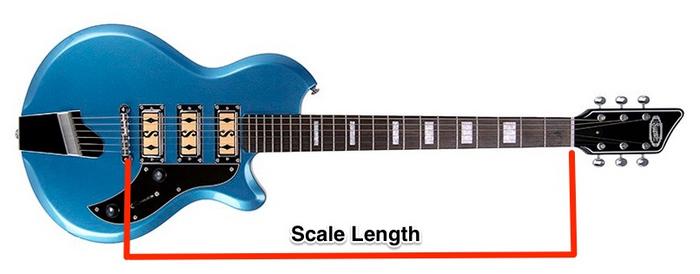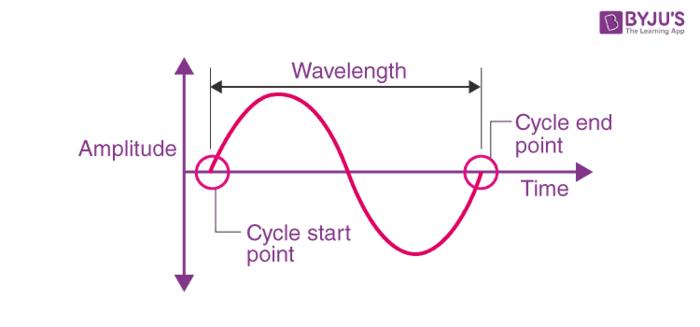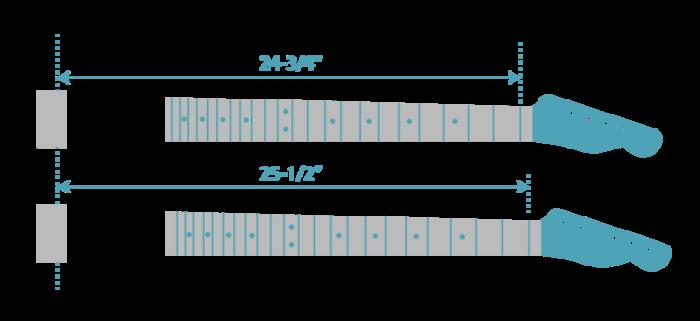It’s fascinating how a few inches of string can change everything. When I first started as an engineer and luthier back in 1994, the scale length of a Les Paul was just a number—one among the myriad of Gibson guitar measurements etched into my mind. But with each guitar I crafted, I began to realize that these numbers were the heart of what made a Les Paul resonate so uniquely. The scale length isn’t merely a specification; it’s the DNA that influences every guitar’s playability and sound, like a hidden code. Through this article, we’ll unravel the mysteries behind the Les Paul scale length, examining in detail its measurements, comparing them to other iconic models, and delving into the subtle nuances that make each guitar not just an instrument but an extension of the musician’s soul. Whether you’re a seasoned player or a curious enthusiast, let’s dive deep into this essential aspect of guitar craftsmanship.
What is Scale Length?
Definition and Importance

Could the difference of just a few inches affect your ability to express yourself musically? In my experience as a guitar craftsman, I have often seen how changes in scale length can dramatically impact both the playability and sound of a guitar. This critical aspect of guitar design essentially refers to the distance from the nut to the bridge saddle. It’s more than just a number; it defines how strings feel under your fingers and how they respond sonically. The subtlety of these modifications can be transformational. A longer scale length generally increases string tension, potentially enhancing clarity but requiring more finger strength, while a shorter one often offers ease of bending and a warmer tone. Truly understanding these distinctions can lead to more mindful choices when selecting or customizing a Les Paul guitar. These decisions will ultimately refine your unique musical expression.
Measurement of Les Paul Scale Length

Have you ever wondered why the Gibson Les Paul’s scale length is often praised as the ‘sweet spot’ for tone and feel? After measuring countless guitars, my experience tells me that the precise 24.75 inches of the Les Paul’s scale length is a key factor in this acclaim. This measurement—so quintessential to the Les Paul—strikes a balance between tension and playability, which many guitarists, including myself, have found to enhance string resonance and sustain.
Understanding scale length is crucial for anyone looking to grasp the importance of these differences among guitars. The Les Paul’s 24.75 inches is not an arbitrary figure; it is a deliberate choice by Gibson that contributes foremost to its distinctive sound and feel. This measurement impacts the tension of the strings, influencing how fast the vibrations dissipate, giving each note a warmer, fuller sound.
As we delve deeper, recognizing this key specification not only helps in appreciating the craftsmanship behind the Les Paul but also sets the stage for comparing it to its contemporaries, such as Fender’s models, which employ distinct scale lengths for different tonal qualities. Next, we will explore why scale length matters and how it affects a guitar’s playability and sound, helping you to decide which might suit your musical preferences best.
Why does Scale Length Matter?
Impact on Playability

Is your guitar’s playability holding you back from mastering your technique? As someone who has tailored countless instruments to meet distinct player preferences, I know firsthand how scale length impacts a guitarist’s ability to navigate the fretboard with ease. This metric is a pivotal factor, not just a technical specification. The scale length determines the spacing of the frets, which directly affects the fretboard distance between notes, influencing how comfortable or challenging a guitar feels under your fingers.
When addressing playability, it’s essential to recognize that even small adjustments in scale length can greatly alter your experience. A shorter scale length can offer a softer string tension and closer fret placement, which some players find easier for intricate fingerwork. Conversely, a longer scale demands more stretch and may require more finger strength but can facilitate a larger range of tones. Understanding these distinctions helps tailor your guitar experience so that the instrument becomes an extension of your creativity rather than an obstacle.
Reflecting on my experiences, I’ve observed that players often overlook the importance of scale length, but choosing the right one can truly transform your relationship with the guitar. As you explore how these adjustments interact with other elements like sound, consider also how they impact your expression and technique, much like the nuanced interplay between Gibson and Fender’s distinctive designs further frays this discussion.
Impact on Sound

What if the key to unlocking your unique sound lies in understanding the scale length of your guitar? In my studies, I’ve discovered how scale length influences not just tonal characteristics, but also emotional expression in music. This connection is subtle yet profoundly powerful. When we talk about tone variation, the difference between short scale and long scale guitars becomes paramount. A shorter scale length, like that of the iconic Les Paul, typically offers a warmer, more rounded tone. This can enhance expressive playing, allowing notes to sustain beautifully, and chords to resonate with rich complexity.
Conversely, longer scale guitars like those from Fender present a brighter, crisper sound with less tension on the strings. This can lead to more defined notes and clear separation, crucial for styles requiring precision. Understanding these distinctions helps one tailor their sound to fit personal styles and genres. Each nuance of scale length is a piece of the puzzle in crafting your musical identity, bridging the technical aspects with the emotional depth that every musician seeks to convey.
Comparing Scale Lengths
Gibson Scale Length vs. Fender Scale Length

What fundamental contrast exists between the scale lengths of Gibson and Fender guitars that can change your music? As an editor of the Savart Journal, I’ve delved into analyses that underscore the compelling variances between these iconic guitars. The Gibson vs Fender scale length discussion is crucial because it highlights how these seemingly minor differences influence both playability and tonal quality. Gibson typically features a 24.75″ scale length, lending itself to a warmer, more rounded sonic character and facilitating easier bending. In contrast, Fender’s 25.5″ scale length offers increased tension, yielding a bright and crisp sound that many players prefer for articulating notes in a mix. This scale length comparison is essential not only to guitar enthusiasts but also to musicians aiming to refine their tone effortlessly. Understanding these distinctions enriches one’s ability to choose an instrument that best aligns with one’s musical objectives. Continuously exploring these subtleties is vital as we dive into how scale length intricately molds the guitar’s voice.
Conclusion
Having devoted my career to exploring the intersection of engineering and music, I believe grasping the importance of scale length will empower musicians and builders alike. Throughout our exploration of the Les Paul scale length, we’ve delved into its role in affecting a guitar’s playability and sound. Understanding these guitar specifications not only enhances your technical knowledge but also deeply influences the creative process. What lasting impact can understanding the Les Paul scale length have on your music journey? As you harness this knowledge, you’ll refine your ability to choose an instrument that complements your unique style and sound aspirations, paralleling the ingenuity behind the Les Paul design. This understanding fosters a more intimate connection with your instrument, empowering you to push musical boundaries. Ultimately, my insights and lived experiences underscore the importance of scale length as a pivotal factor in crafting a compelling and personalized musical experience.
FAQs

R.M. Mottola, an engineer-turned-luthier, revolutionizes stringed instrument design with his deep focus on acoustics and ergonomics since 1994. As editor of the Savart Journal and a key contributor to American Lutherie, Mottola merges science with artistry in lutherie. He enriches the field with his extensive knowledge, shared through his Liutaio Mottola website, making him a beacon in the world of modern instrument craftsmanship.
